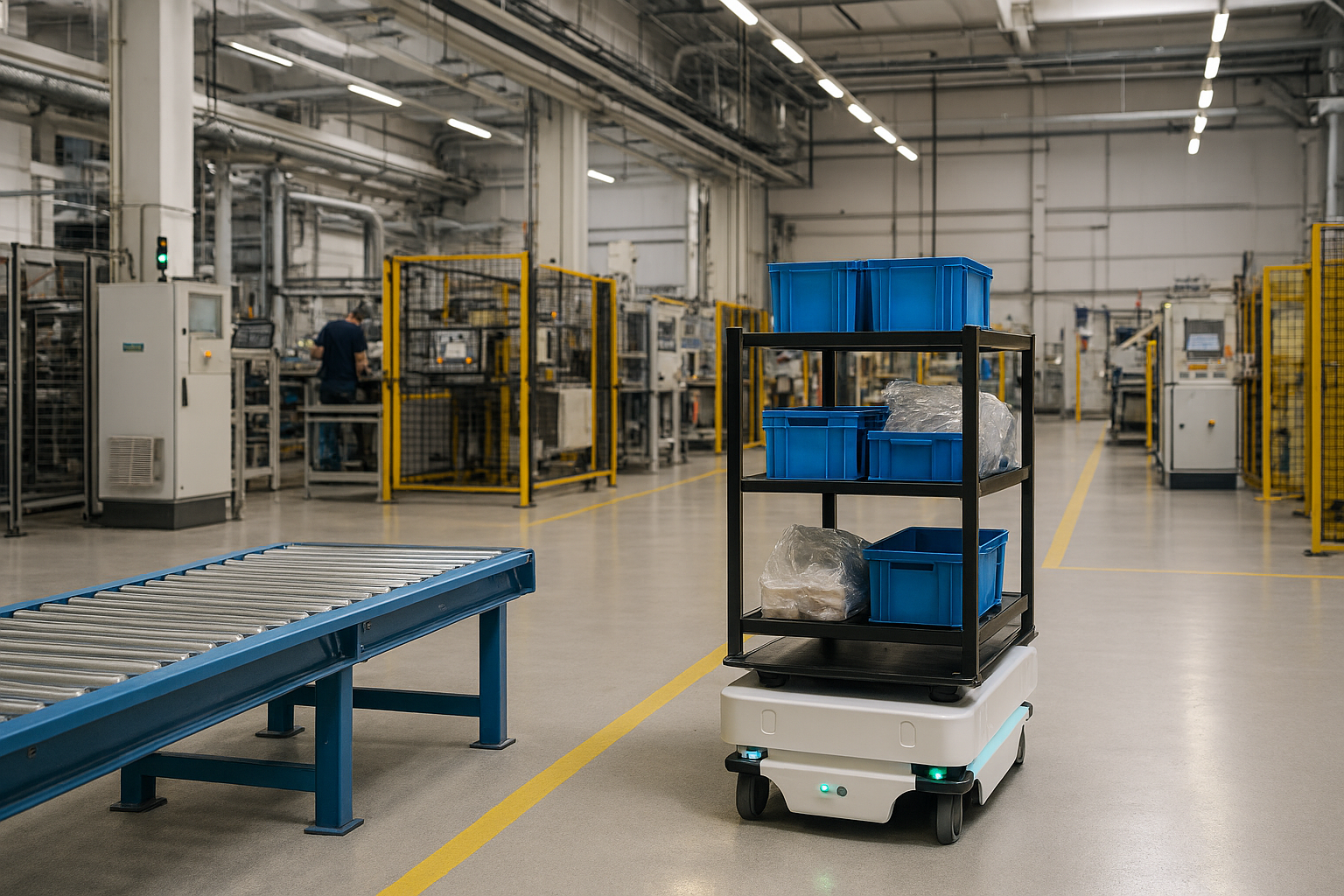Advanced Shipping and Receiving in SAP: Rethinking Integration
Advanced Shipping and Receiving (ASR) in SAP S/4HANA forms the modern bridge between transportation management and warehouse management. The classic separation between SAP EWM and SAP TM is being replaced by deeply integrated processing, with the aim of streamlining processes, avoiding redundancies and using real-time information consistently.
SAP ASR as a new integration model in SAP S/4HANA
Advanced Shipping and Receiving (ASR) is a new process model in SAP S/4HANA that replaces traditional transport and vehicle objects such as Transportation Unit and Vehicle with the TM Freight Order (Freight Order) as the only central object. This abolishes the previous separation of SAP TM and SAP EWM and achieves continuous integration of both systems.
Process variants and benefits of SAP ASR
ASR enables various control options — either transport-oriented or warehouse-oriented. Depending on the variant chosen, transport or storage processes become leaders in execution. In both cases, companies benefit from greater transparency, fewer interfaces, reduced integration costs and automated updates, which increase process reliability and reduce errors.
Deployment scenarios, challenges, and requirements for SAP ASR
ASR is used in particular in processes such as incoming goods, outgoing goods and load consolidation. The technical requirement is an SAP S/4HANA release from 2020 in combination with Webservices. Successful implementation requires a redesign of existing processes and in-depth know-how in SAP EWM and SAP TM.
What is SAP Advanced Shipping and Receiving (SAP ASR)?
SAP Advanced Shipping and Receiving, ASR or Adv. SR for short, is an innovative process model within SAP S/4HANA that replaces traditional transport and vehicle objects (Transportation Unit & Vehicle) with the TM freight order (Freight Order) as the only central object. The logistics chain is managed end-to-end in an integrated scenario. This enables the joint use of master data, the continuous management of transport units — such as handling units and freight units — as well as the automated update of processes and status reports along the entire supply chain. As a result, the interaction of the SAP EWM, SAP TM and SAP Sales and Distribution logistics modules is seamlessly integrated and harmonized.
Process variants: transport vs. warehouse orientation
Within the framework of SAP Advanced Shipping and Receiving, a distinction is made between two central control variants. In the “transport-driven” variant, planning and execution are primarily carried out by SAP TM. Warehouse processes are initiated here after transport approval has been completed. This control system is particularly suitable for scenarios involving central transport planning or cross-site consolidation. In contrast, there is the “warehouse-driven” variant, in which the warehouse process is triggered first and the subsequent transport planning is based on the completed shipments. This approach is useful when the warehouse sets the pace, for example at high throughput rates or in highly operational units.
Benefits of SAP ASR integration
The merging of storage and transportation processes results in a wide range of operational and strategic benefits. Integration costs are significantly reduced as middleware components are eliminated and qRFC-supported queues no longer need to be managed. At the same time, real-time transparency is created, as warehouse status, transport status and relevant events can be retrieved centrally. Process reliability increases through automated updates in incoming and outgoing goods, which also reduces the incidence of errors. In addition, SAP ASR provides centralized planning for transport and warehousing, a synergy that has a positive effect on process stability and resource utilization. Last but not least, the streamlined processes lead to cost reductions, as redundant data storage and interface maintenance are no longer necessary.
Technical basics & system requirements
SAP Advanced Shipping and Receiving is available from SAP S/4HANA Release 2020 - both for on-premise and private cloud installations. Technically, deployment requires active integration of SAP EWM and SAP TM within the same SAP S/4HANA system. The connection is made via Webservices. In addition, the customizing settings for transports, loading processes and resources used must be adjusted accordingly so that continuous control in the system can be activated.
Practical application scenarios
In reality, the strength of SAP ASR is particularly evident in complex logistical scenarios. When goods are received, deliveries can be linked directly to time window controls and warehouse receipt strategies, which increases planning security and optimizes docking management. In outgoing goods, transport orders are automatically generated when shipping is ready, which ensures a seamless transition from warehouse to transport. Load consolidation also benefits: Loading units from various orders can be brought together by the system and planned efficiently.
Implementation challenges
Despite the numerous benefits, the introduction of SAP ASR is not a plug and play project. Instead, a comprehensive process redesign is necessary, as existing storage and transport processes must be completely recoordinated. In addition, know-how in the two modules SAP EWM and SAP TM is required in order to be able to efficiently configure and operate the interaction. Last but not least, a careful analysis of the previous logistics strategy is required in order to integrate SAP ASR precisely into the existing system landscape.
TU-based integration as an alternative
The classic TU-based integration (transport units) remains available in SAP and represents an established solution for many existing customers, particularly in system landscapes where SAP TM is not used or is only used to a limited extent. Compared to SAP ASR logic, however, the TU-based variant offers less depth of integration, is more fragmented and requires additional maintenance costs for transport units and documents. For companies with existing SAP EWM and TU infrastructure, parallel operation or a gradual migration to SAP ASR can be a useful interim solution.
Shortfacts
- SAP S/4HANA integrates EWM and TM end-to-end
- Fewer interfaces, more transparency
- Standard since S/4HANA 2020
- Integration via Webservices and LDAP
- Redundancies and waiting times are avoided

Conclusion: When is SAP Advanced Shipping and Receiving worthwhile?
SAP Advanced Shipping and Receiving is suitable for companies with high throughput, complex warehouse structures and a need for real-time information along the supply chain. SAP ASR offers strategic advantages in efficiency and transparency, especially when it comes to new SAP S/4HANA deployments or when converting separate SAP TM or EWM landscapes.
Qinlox supports the planning and implementation of SAP ASR scenarios - holistically, practically and across systems.
Request a non-binding workshop on ASR process integration now.
FAQs
Do you have any questions? We have compiled the most important answers for you in the following FAQs. If your question is not listed, please feel free to contact us directly.
SAP Advanced Shipping and Receiving, SAP ASR for short, is a consistent process model that deeply integrates SAP EWM and SAP TM within an SAP S/4HANA system. The aim is to replace traditional interfaces and orchestrate logistical processes - from warehouse provision to transport planning - in a uniform scenario.
The close integration of both modules, i.e. SAP EWM and SAP TM, makes middleware components and redundant data storage unnecessary. Processes are becoming significantly more transparent and stable as transport and warehouse status is consolidated in real time. In addition, automation is increasing along the supply chain, which leads to a noticeable reduction in coordination and maintenance costs.
The transport-oriented version focuses on early transport planning in SAP TM — the warehouse works downstream. Warehouse-oriented control, on the other hand, is based on the warehouse process as a pacemaker: Transport planning only takes place when shipments have been picked and made available. Which variant is chosen depends heavily on the business model and operational orientation.
The prerequisite is an SAP S/4HANA system from Release 2020 with activated components for SAP EWM and SAP TM. Integration is carried out using WebServices and LDAP, which requires additional customizing settings for transports, resources, time windows and loading processes.
SAP ASR is particularly useful in scenarios with high throughput, complex warehouse structures or central transport planning. Advanced Shipping and Receiving offers clear strategic advantages, particularly when introducing new SAP S/4HANA or converting existing SAP TM and SAP EWM systems — both in terms of efficiency and scalability and transparency.









